Stiff competition for exploration services
Lack of services signal mining sector rebound; blockchain, though, shows investors oft favor data mining to actual mining North of 60 Mining News – May 1, 2018
Last updated 9/25/2020 at 4:43am
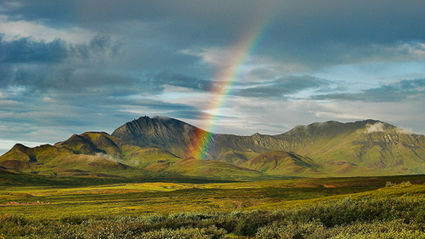
Solitario Zinc Corp.
A rainbow arcs over Lik, a promising zinc-lead-silver project about 14 miles northwest of Red Dog in Northwest Alaska.
An early spring coupled with low snow fall in many parts of Alaska have combined to enable companies large and small to start their summer field programs early this year. As expected, competition is stiff for people, drills, helicopters, heavy equipment and related services, awarding those who committed budgets early and penalizing those who did not or could not commit early.
For the first time in half a decade, projects with money at hand may not be able to get the services they want due to lack of available services.
But, lest you think the financial markets are flocking to the mining sector, consider recent changes made by Natural Resource Holdings Ltd., until last fall a major investor in gold and iron ore mines in North America. At that point, the company announced it was considering switching investment strategies, putting their significant financial clout to work on blockchain technology, the decentralized database methodology used by crypto-currencies worldwide. The stock rose some 1,300 percent on the announcement alone, prompting the company to follow through, change their name to Ltd. and change their core business from mining actual gold and iron to digital data mining.
So, while the mining industry is on the rebound, we are still a long way from achieving most-favored sector status in the global village!
WESTERN ALASKA
Solitario Zinc Corp. announced that for the first time since it earned its interest in the Lik zinc - lead project in northwest Alaska, Solitario and a subsidiary of Teck Resources Ltd. will share exploration funding on the project. Teck will act as project operator for the 50-50 partners. Exploration efforts will include geologic mapping of the project holdings to development drill targets through a better understanding of stratigraphy and structure. The partners will also conduct a new gravity geophysical survey over a substantial part of the 6,075-acre property block. Other geophysical work consists of compilation and merging of past induced polarization geophysical surveys. Teck has had success in the nearby Red Dog district using these geophysical tools to detect moderately to deeply buried zinc-lead deposits. The program will also include relogging of Lik core to compare and contrast the Lik deposit to deposits in other parts of the prolific Red Dog district. The companies will undertake camp rehabilitation to allow for future use of the established infrastructure and the partners will conduct a review of previous environmental work to determine the scope and nature of future environmental baseline work for the project. Current resources at Lik include an indicated resource of approximately 17.3 million tonnes (metric tons) grading 8 percent zinc, 2.7 percent lead and 51 grams of silver per tonne and an additional 2.9 million tonnes of inferred resource at 8.6 percent zinc, 2.6 percent lead and 37 g/t silver.
Novagold Resources Inc. released first quarter 2018 results for its flagship Donlin gold project, owned 50 percent with Barrick Gold Corp. The project is on land owned by mineral estate owner Calista Corp. and surface estate owner The Kuskokwim Corporation. The company reported that the final Environmental Impact Statement (EIS) for the project is complete and expected to be published shortly by the U.S. Army Corps of Engineers. The final EIS will be made available on the Donlin gold EIS website: http://www.donlingoldeis.com. A Record of Decision (ROD) is expected to follow in the second half of the year. Other key state and federal permits and approvals are scheduled to be finalized concurrently with or shortly after the Corps' ROD in 2018. The companies also advanced the optimization work intended to improve capital efficiencies and enhance the project's execution plan while maintaining project upside potential. The company estimated its share of the total budget for 2018 at $14 million, including permitting costs of $9 million and project optimization work of $5 million.
Northern Dynasty Minerals Ltd. announced that the U.S. Army Corps of Engineers has posted a scoping package for the Draft Environmental Impact Statement (EIS) for its Pebble copper-gold-molybdenum project near Iliamna. Shortly after posting the data, the original 30-day comment period was increased to 90 days, with this phase of comments closing on June 29. Following publication of the Draft EIS, the Corps of Engineers will facilitate a formal consultation and public comment process, expected sometime in 2019. The Corps' current timeline projects the Final EIS for the Pebble Project to be complete within 24 months. The relatively short time frame to reach a Record of Decision on the Final EIS is a function of process efficiencies learned by the Corps during past Alaska permitting efforts and the large amount of baseline data available on the project. Data on the project can be found at the Pebble EIS website: http://www.pebbleprojecteis.com.
Riversgold Limited announced plans for its 2018 exploration efforts on its Luna – Quicksilver and its Gemuk Mountain gold projects in southwest Alaska. At Luna-Quicksilver, the company is planning to conduct a grid induced polarization survey, combined with surface geochemical sampling, over the approximately five-kilometer (three miles) strike of the prospects. The combined geophysical and geochemical surveys will be used to refine the location of proposed diamond drill holes testing beneath high-grade outcropping mineralization at Luna, Luna East and Quicksilver prospects. The company also plans to test at least one of the large magnetic anomalies adjacent to the North Fork pluton, which are interpreted to represent potential high-grade gold-copper skarn mineralization. Earlier in the first quarter, the company staked the Gemuk Mountain prospect along the same northeast trend of plutonic mineralization identified at Luna, Quicksilver and North Fork. Discovered in the 1970s, initial sampling by the USGS and US Bureau of Mines returned gold values ranging from 91 to 100 grams of gold per tonne associated with anomalous silver, arsenic and high-grade antimony in quartz-stibnite veins at the contact between a biotite diorite and hornfelsed quartzite and shale. Airborne magnetic data shows that the high-grade rock chip samples taken at Gemuk are located on the same northeast trending interpreted structure that hosts outcropping high-grade gold mineralization at Quicksilver, about 20 kilometers (12.5 miles) along strike to the southwest. The company plans to conduct systematic geochemical and geophysical surveys over the Gemuk property in 2018 with the aim of defining targets for future drill testing.
Redstar Gold Corporation provides an update for its fiscal year ended March 31at its Unga gold project on Unga Island. During 2017, the company completed a geophysical program, two diamond drill programs, and contracted with Mine Development Associates to complete a NI 43-101 technical report for the project. During 2017, the strike length of the Shumagin gold zone was extended from 950 meters as at the end of 2016 to 1750 meters. The company is also reviewing data from historical drill programs completed by Battle Mountain Gold Corp. on the Centennial prospect on neighboring Popof Island. The historical work on the Centennial prospect indicates that there is a disseminated mineral inventory which starts at surface and extends to 60 meters. The 2018 summer exploration program will be based in large part on the conclusions contained in the NI 43-101 report and other work currently being completed internally.
INTERIOR ALASKA
Through a series of public presentations and interviews, Sumitomo Metal Mining announced that total production at its Pogo gold mine in 2017 was 271,273 ounces, putting the mine on pace to pour its 4 millionth ounce of gold in early 2019. An internal resource estimate is in progress to determine expected mine life for the operation. The company also indicated that in 2018 it will be conducting $21 million in exploration work in and around the mine. Additional excitement, at least from the exploration front, relates to new mineralization discovered on the project, such as the Fun zone and the Goodpaster zone, just northwest of current underground mining operations. The mine's exploration staff reviewed old CSAMT (controlled-source audio magnetotelluric) geophysical data and noted a subtle conductive zone above the Liese veins where mining has been carried out since operations began in 2006. This geophysical method was applied to other areas of the project and following a 120 line-kilometer CSAMT effort, the company identified new targets, including the Fun and Goodpaster zones, with similar geophysical signatures to those known over mineralized veins. The high-angle Fun zone has returned intercepts up to 10 ounces of gold per ton, however the Goodpaster zone opened up additional exploration potential since it appears to lie northwest of a major fault where little in the way of Pogo-style mineralization had been found in the past. Drilling in the Goodpaster zone returned 22.8 feet grading 0.103 ounces of gold per ton and 17.5 feet grading 1.739 ounces of gold per ton, the latter in an orthogneiss host rock with mineralogy and gold:bismuth ratios identical to the paragneiss-hosted Liese veins to the southeast. CSAMT results suggest the Goodpaster zone may be up to 5,000 meters long and may be the fault offset of the Liese zone.
Contango ORE Inc. announced that Peak Gold, LLC, the company's joint venture with Royal Alaska, a wholly-owned subsidiary of Royal Gold, Inc., has approved a phase 1 budget of approximately $9.1 million for the Peak gold-silver-copper project. The budget is designed to define a path to commercialization of its current resource via the Preliminary Economic Assessment due for completion in September, explore for a third skarn orebody in close proximity to the Main Peak and North Peak orebodies, and acquire data that would help evaluate the potential for porphyry and/or epithermal mineralization elsewhere on the project lands. Included in the budget is 6,900 meters of exploration drilling and 74 line kilometers of induced polarization and Titan geophysical surveys. The exploration for new skarn mineralization will be conducted on four separate near-resource targets. Exploration for porphyry type deposits will be conducted in three prospect areas which have not been explored to date.
ALASKA RANGE
PolarX Ltd. announced an industry-compliant inferred resource for the Zackly copper-gold deposit at its Alaska Range project in the central Alaska Range. The company also released plans to begin extensive drilling at several prospects. The inferred resource for the Zackly deposit is 3.4 million tonnes grading 1.2 percent copper, 2 grams of gold per tonne and 14 g/t silver (41,200 tonnes of copper, 213,000 ounces of gold and 1.5 million ounces of silver). This estimate is in line with historical resources for the deposit. The Zackly inferred resource occurs from surface to a depth of between 250 and 500 meters (average 300 meters) along a strike-length of 1,050 meters within a broader mineralized envelope which extends for almost 3,000 meters. The inferred resource occurs over an average width of 3.35 meters, ranging from 0.6 to 12 meters. Skarn mineralization remains open at depth and along strike in both directions. The company is finalizing further exploration and drilling programs to grow the resources at Zackly and its nearby Caribou Dome prospect (2.8 million tonnes grading 3.1 percent copper at a 0.50 percent copper cut-off grade), as well as test the Mars and Moonwalk prospects. This work will include a detailed helicopter-borne aeromagnetic and radiometric survey to better define potential intrusive centers representing drill targets for porphyry copper-gold mineralization. It will also include re-interpretation of the historical and 2017 induced polarization geophysical data collected at Zackly and Mars prospects to provide refined drilling targets at these two targets. The company also plans resource extension drilling along strike and down-dip of the inferred resource at Zackly, deep drilling to test for a buried porphyry copper-gold source related to the Zackly skarn mineralization and reconnaissance drilling at the Mars copper-gold and Moonwalk gold targets.
Avidian Gold Corp. provided an overview of results from an induced polarization program completed in 2017 at its Golden Zone project. The 43 line-kilometer survey, covering the Riverside, Breccia Pipe Deposit area, Bunkhouse, Copper King and South Long Creek prospects, used a variety of array and dipole separations. These data were integrated into a 1996 aerial geophysical survey that included 100 meter line-spaced total magnetics and five frequencies of electromagnetics and a 1982 controlled-source audio magnetotelluric (CSAMT) survey. These integrated methods delineated magnetic lows and resistive highs interpreted to represent intrusive events potentially related to the areas of known gold mineralization and possibly as-yet undiscovered mineralization. The airborne magnetic data also provided insight into the structural trends on the property and highlighted the significance of structures in the known mineralized areas. Magnetic data indicate a strong northeast-southwest structural trend with orthogonal cross cutting faults, often in areas with known mineralization. It is believed the cross-cutting faults have provided conduits for mineralized fluids to concentrate mineralization, such as in the area of the Breccia Pipe prospect. A prominent resistivity high identified in the 1982 CSAMT data suggests an intrusive event to the immediate northwest of the Breccia Pipe deposit. Mineralization at the Breccia Pipe West, the Breccia Pipe deposit, Bunkhouse and Mayflower areas is found along the eastern edge of this interpreted intrusive. The Riverside, Breccia Pipe deposit, Bunkhouse and Copper King prospect areas displayed pronounced chargeability anomalies over strike lengths in excess of 500 meters. Combined induced polarization and CSAMT resistivity highs near the Breccia Pipe deposit are thought to be intrusive centers. Drill testing of some of these anomalies in 2017 led to the intersection in hole GZ17-10 of 21.6 meters grading 1.46 grams of gold per tonne in a previously unknown mineralized conglomeratic unit that is now open to further drilling. A trench in a similar conglomerate unit at Long Creek prospect, located 4,000 meters to the southwest, returned 6.1 meters grading 13.8 g/t gold, 34.4 g/t silver and 0.85 percent copper. In the Copper King and Long Creek prospect areas, the induced polarization survey and the historic airborne magnetic survey identified a number of magnetic low features interpreted to be shallow intrusives, adjacent to the known mineralization associated with chargeability highs.
Alaska newcomer New Age Metals Inc. announced a lease-purchase option with a private Alaska corporation Anglo Alaska Gold Corp., to acquire the Genesis platinum group metal prospect north of Valdez. The 10,240-acre project is located on State land within three kilometers (two miles) of a paved highway and industrial-scale electrical power. The drill-ready, reef-style target has not been drilled but surface samples returned 2.4 grams of palladium per tonne, 2.4 g/t platinum, 0.96 percent nickel and 0.58 percent copper. The mineralized reef has been identified in outcrop for 850 meters along strike, over a 40-meter true thickness, and remains open to the west, east, north and at depth. A separate style of chromite-bearing mineralization on the project contains up to 2.5 g/t palladium and 2.8 g/t platinum. Known platinum group metal mineralization covers a distance of nine kilometers (5.6 miles) across the prospect. Under terms of the deal, New Age Metals can earn 100 percent interest in the project by paying Anglo Alaska $120,000 over three years and issuing 800,000 shares of New Age Metals common stock over the same period. The deal is subject to a 3 percent net smelter return production royalty which New Age Metal can buy down under agreed upon terms. Welcome to Alaska New Age Metals Inc.!
Nova Minerals Ltd. (formerly Quantum Resources Ltd.) provided an update on their Estelle gold project in the southern Alaska Range. The company is planning a June start to exploration, including rock sampling, induced polarization geophysics, and auger sampling followed by core drilling and trenching. The company hopes to advance the Oxide zone to an industry-compliant resource by the end of 2018. Previous drilling on this prospect returned significant grade-thickness intervals, including 450.68 meters grading 0.38 grams of gold per tonne starting at 10.18 meters depth, including 365.7 meters grading 0.43 g/t gold starting at 31.79 meters. Hole SE12-004, the southeastern-most hole in the Oxide zone returned 41.45 meters grading 1.14 g/t gold starting at 30.79 meters. The company also plans to begin environmental baseline work. In addition, the company has undertaken research into cold climate heap leaching technologies suitable for the bulk tonnage copper-gold mineralization expected at the project. Pending completion of drilling results, metallurgical studies are anticipated for late 2018 with preliminary feasibility studies anticipated for 2019.
SOUTHEAST ALASKA
Hecla Mining announced preliminary first quarter 2018 production results for its Greens Creek mine on Admiralty Island. The mine produced 1,913,232 ounces of silver and 13,118 ounces of gold, compared to 1,929,297 ounces of silver and 14,022 ounces of gold produced in the year previous period. Lower silver and gold production was expected due to mine sequencing but was partially offset by higher mill throughput. The mill operated at an average of 2,349 tons per day in the first quarter, compared to 2,190 tons per day in the first quarter of 2017.
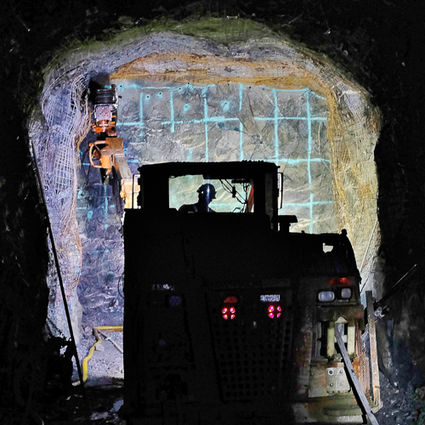
The Redpath Group
Underground development reached the Jualin deposit during the second half of 2017, but mining activities have been hampered by the quantity of water encountered at this high-grade gold deposit at Kensington.
Coeur Mining Inc. reported first quarter 2018 production results from its Kensington mine. The mill processed 158,706 tons of ore, a slight decrease over the 165,895 tons of ore produced in the year previous period. The mine produced 26,064 ounces of gold grading 0.17 ounces of gold per ton with an average recovery of 94 percent, with total production down slightly but grade and recovery steady compared to the first quarter of 2017. These lower production figures were anticipated due to mine sequencing and mill-related down-time. Higher grades, recoveries and production are anticipated for the remainder of 2017. The company also indicated that development work and dewatering of the high-grade Jualin deposit is progressing with production increases expected in the second half of 2018. The company indicated that it expects full-year 2018 production from the mine at 115,000 to 120,000 ounces of gold.
Curtis J. Freeman CPG #6901
Avalon Development Corp.
P.O. Box 80268
Fairbanks, AK 99708
Phone: 907-457-5159, Fax 907-455-8069
Email: [email protected]
Website: http://www.avalonalaska.com


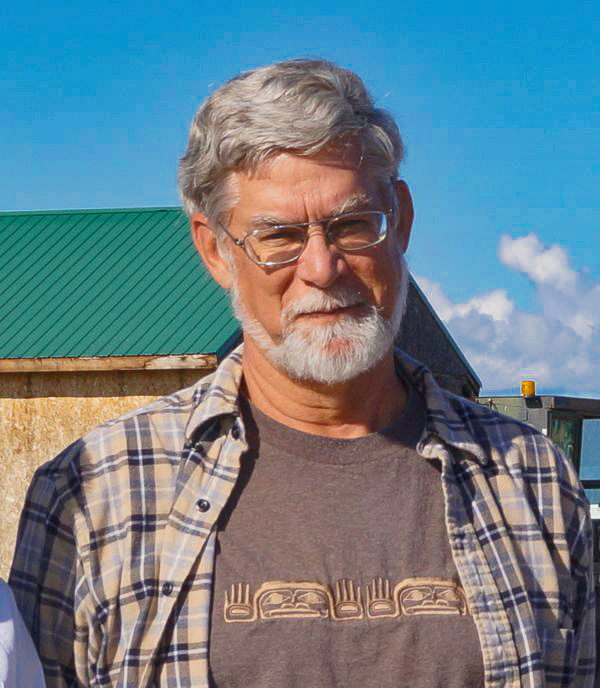






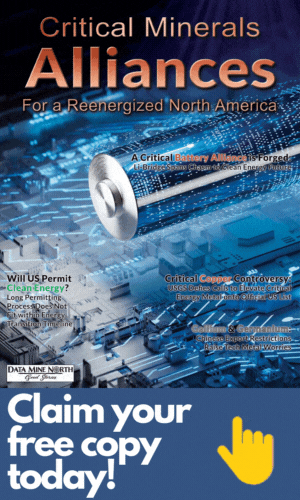


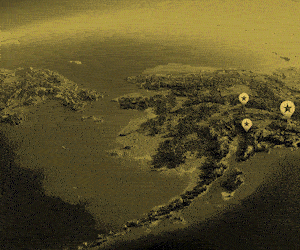
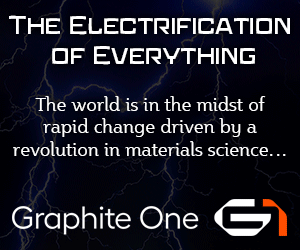

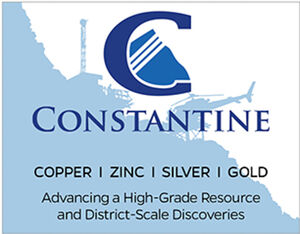
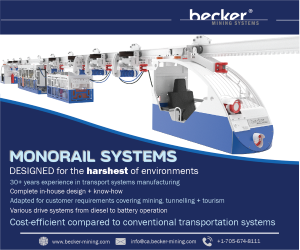


Reader Comments(0)